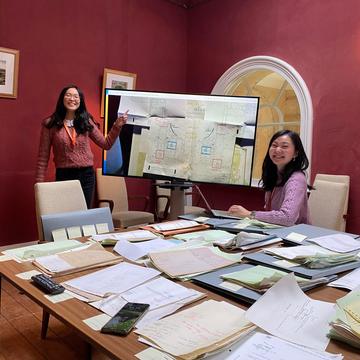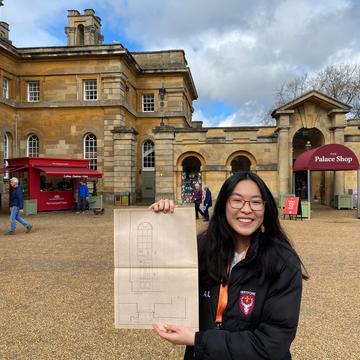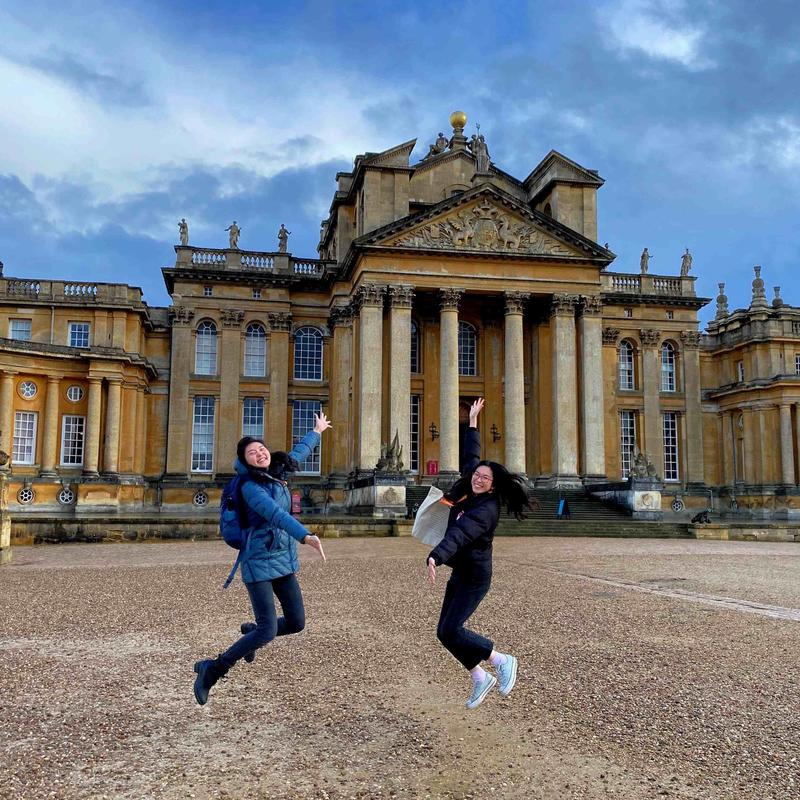"Blenheim Palace: The Archives of an Architect" is the result of a micro-internship conducted at Blenheim Palace in partnership with the Oxford University Heritage Network to support the wider work of Kick-starting Heritage Innovations. The following blog reflects on Amy's experience.
Blenheim Palace is the ancestral seat of the Duke of Marlborough, a UNESCO World Heritage Site, and a local treasure that lies a short bus ride away from Oxford. Through the micro-internship scheme, arranged by the Oxford Heritage Network, I have had the truly wonderful experience of exploring the ins and outs of Blenheim Palace’s architectural history through its archival records. This placement put me in contact with members of the heritage team at Blenheim as well as researchers at Oxford University to showcase a range of perspectives on the Palace’s history.

Fig. 1 Unpacking the archives and locating areas described in the materials within a modern floorplan. Photo credit: Amy Leung and Leia Yen
My time at Blenheim Palace began with a tour from the Palace architect, providing an in-depth insight into the building (including access to places the public weren’t allowed into!) to show us how it has changed over time. Getting familiar with the building contextualised information we later discovered in the archives, allowing us to play the part of tourists before engaging with all the work behind the scenes to support the visitor experience.
Diving into the specifics, the aim of the placement was to organise and digitally catalogue records accumulated by the previous Palace architect. This included dividing records based on project, locating specific areas relating to a master roof and floor plan, and even replacing rusty paper clips with proper archival stationery to make sure the materials would continue to be well preserved. Archiving is a process that requires attention to detail and I found it incredibly satisfying to fit together different pieces of material to understand a wider narrative. An archivist’s job is not only to record information, but also to tell a story and make sure this meaning can be effectively passed on. We were well supported by Palace staff while also being given the agency to shape how we wanted to conduct our study and truly make it our own project.

Fig. 2 Holding an archival drawing of a curved window from the Sunderland Library. The same curved window is visible in the background, now part of the converted Spencer-Churchill Rooms. Photo credit: Amy Leung and Leia Yen
Although our archive was focused on records of conservation and repair in Blenheim Palace, some other particularly intriguing materials we found included dinner invitations to Oxford colleges, old advertisements for tours, and even a selection of beautiful film photographs of sites we later located ourselves on a lunch break. A highlight of the week was locating the Sunderland Library, a name that was constantly appearing in written records but could not be identified in Blenheim Palace’s floor plan. Within one of our boxes was a bundle of sketches and documents, revealing how the Sunderland Library was converted into a conference room and assumed a new modern name. Coincidentally, after locating the conference room on the map, the converted Sunderland Library could be seen through the window of the room we were working in!
This hands-on project fit neatly into the future conservation and restoration plans of Blenheim Palace as we helped to establish a solid foundation of past repairs and conservation to inform future planning. I am excited to see how the digital catalogue we started evolves and what new secrets will be discovered next!

An excited end of internship photo in front of the Great Court of Blenheim Palace! Photo credit: Amy Leung and Leia Yen
Amy Leung (she/her) is a third year geography undergraduate at Hertford College, Oxford, who is interested in the different ways people access and engage with heritage.
Find out more about the TORCH Heritage Programme here.